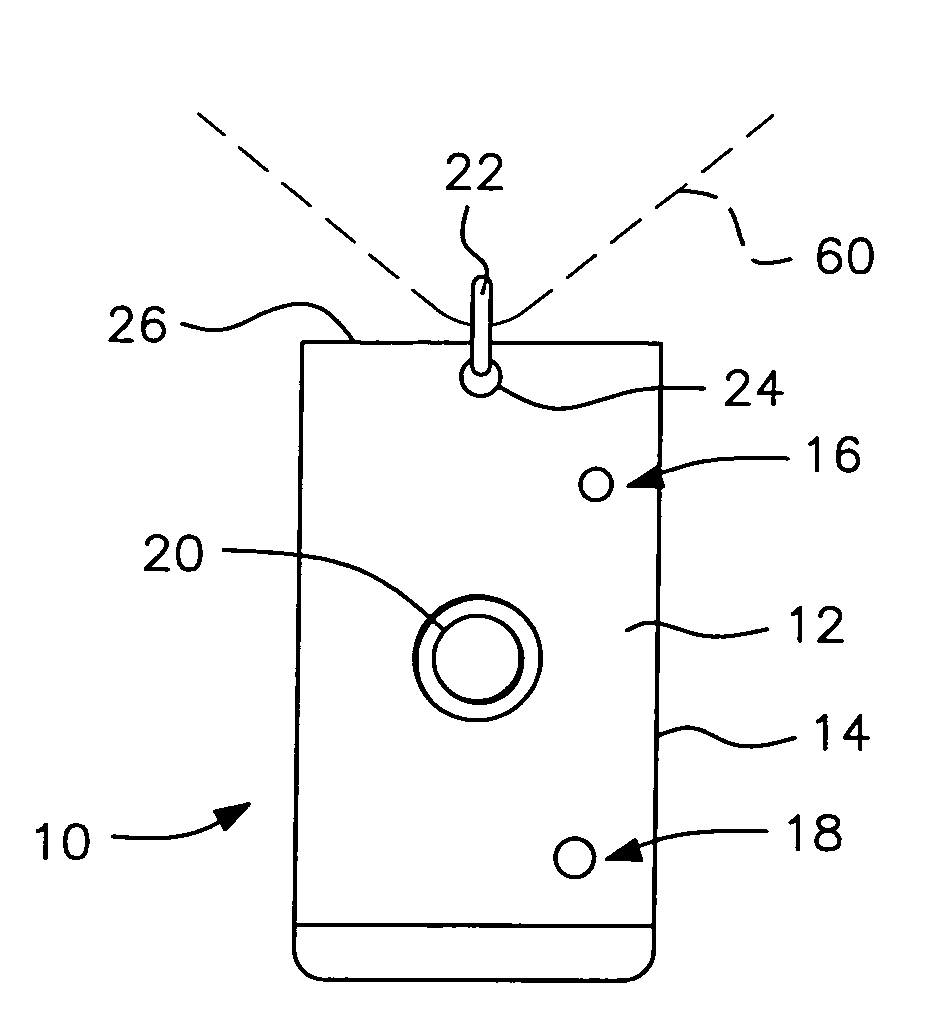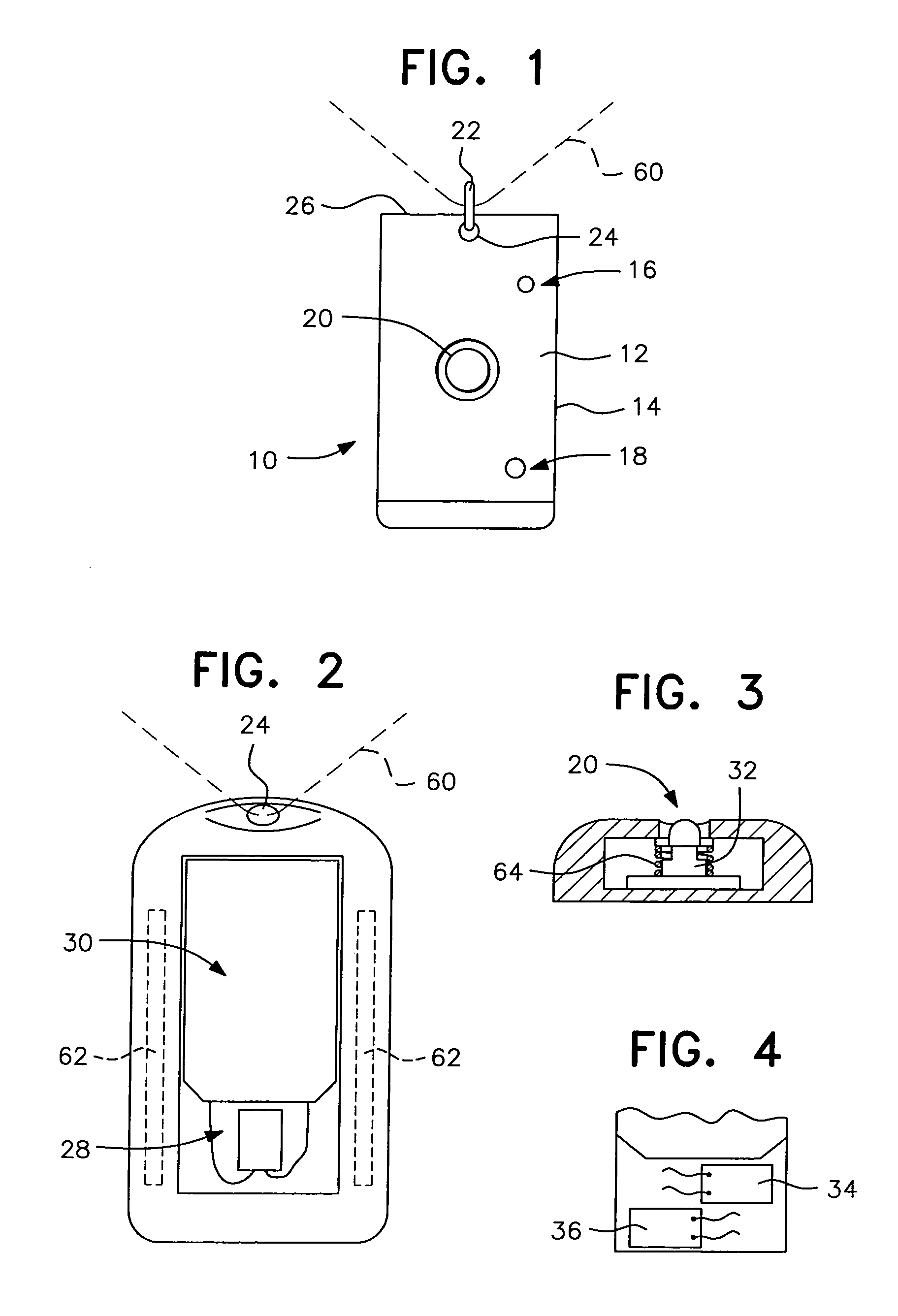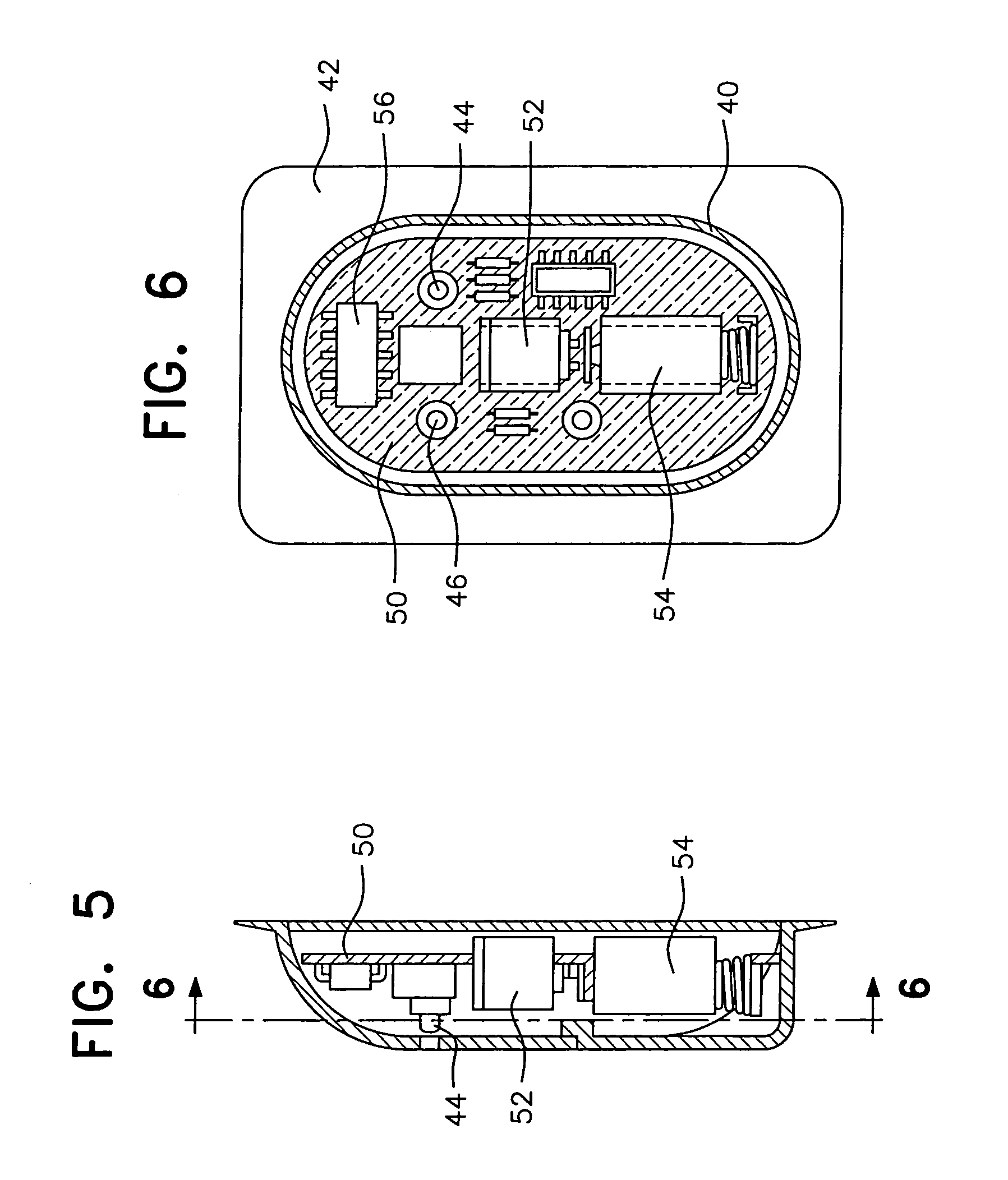Wireless patient ambulation motion detector and second call system
a motion detector and patient technology, applied in the field of patient ambulation motion detectors, can solve the problems of many false alarms, excessive delay, confusion and consumption of responsibility, etc., and achieve the effect of reducing the shortage of nurses
- Summary
- Abstract
- Description
- Claims
- Application Information
AI Technical Summary
Benefits of technology
Problems solved by technology
Method used
Image
Examples
Embodiment Construction
[0023]In describing preferred embodiments of the invention illustrated in the drawings, specific terminology will be resorted to for the sake of clarity. However, the invention is not intended to be limited to the specific terms so selected, and it is to be understood that each specific term includes all technical equivalents which operate in a similar manner to accomplish a similar purpose.
[0024]The wireless patient ambulation motion detector and second call system of this invention consists of three functional components as follows:[0025]1. As illustrated above with reference to my prior patents, a rotary switch capable of detecting when the angle of the patient's body is 85°–90° from the horizontal, the position most often indicative of impending ambulation. All other positions will be ignored thus eliminating false alarms. This switch is intended to alert hospital personnel of a situation which could result in a fall by the patient.[0026]2. A low power wireless transmitter and p...
PUM
 Login to View More
Login to View More Abstract
Description
Claims
Application Information
 Login to View More
Login to View More - R&D
- Intellectual Property
- Life Sciences
- Materials
- Tech Scout
- Unparalleled Data Quality
- Higher Quality Content
- 60% Fewer Hallucinations
Browse by: Latest US Patents, China's latest patents, Technical Efficacy Thesaurus, Application Domain, Technology Topic, Popular Technical Reports.
© 2025 PatSnap. All rights reserved.Legal|Privacy policy|Modern Slavery Act Transparency Statement|Sitemap|About US| Contact US: help@patsnap.com



